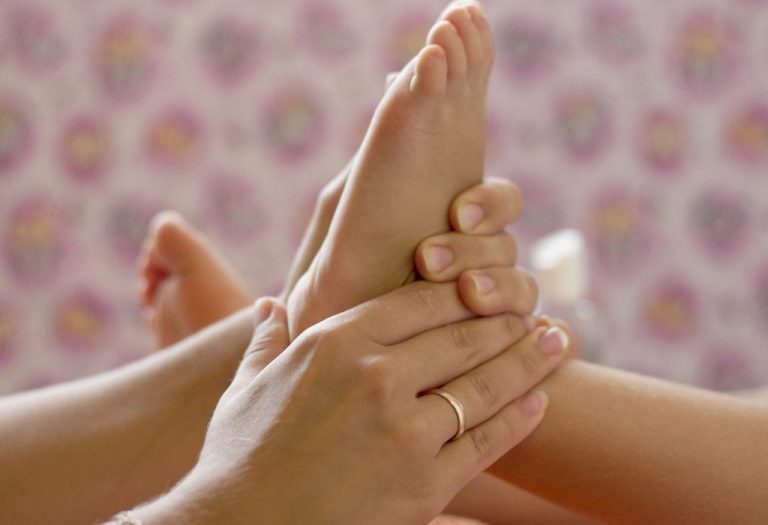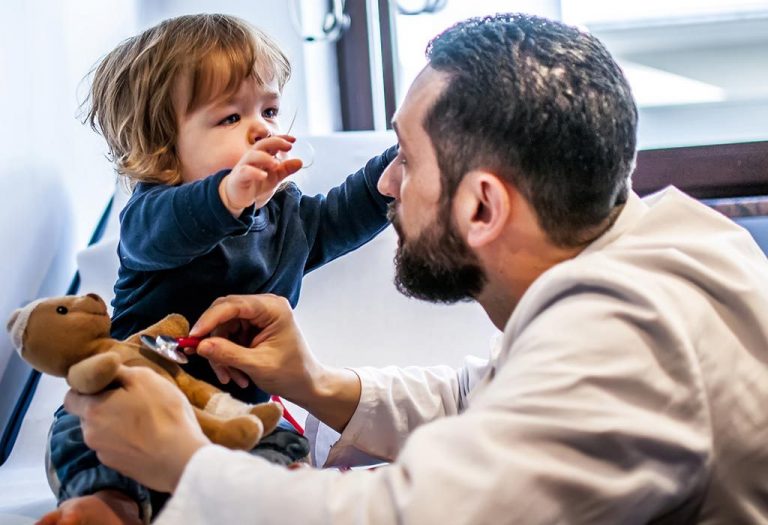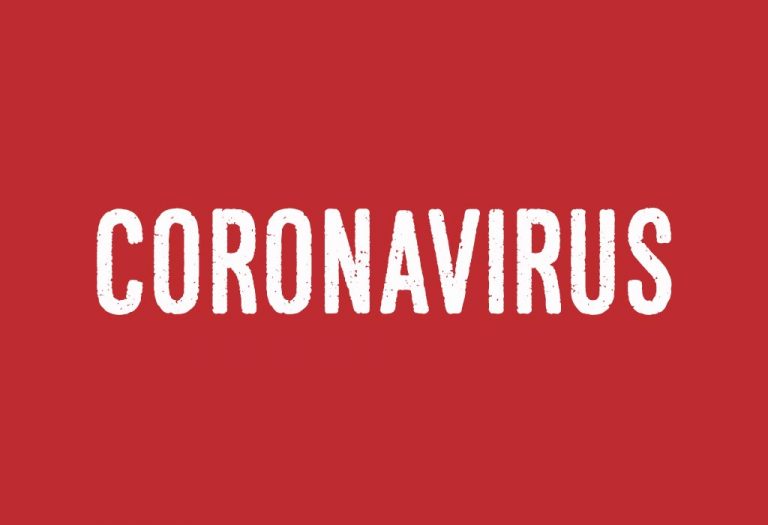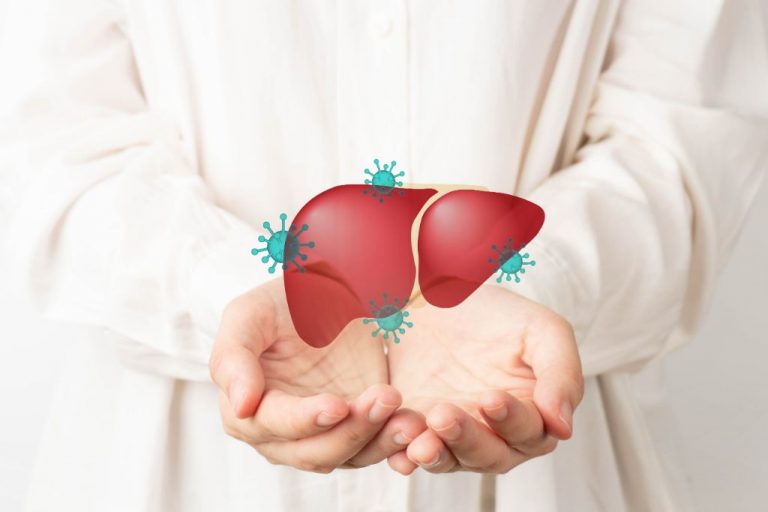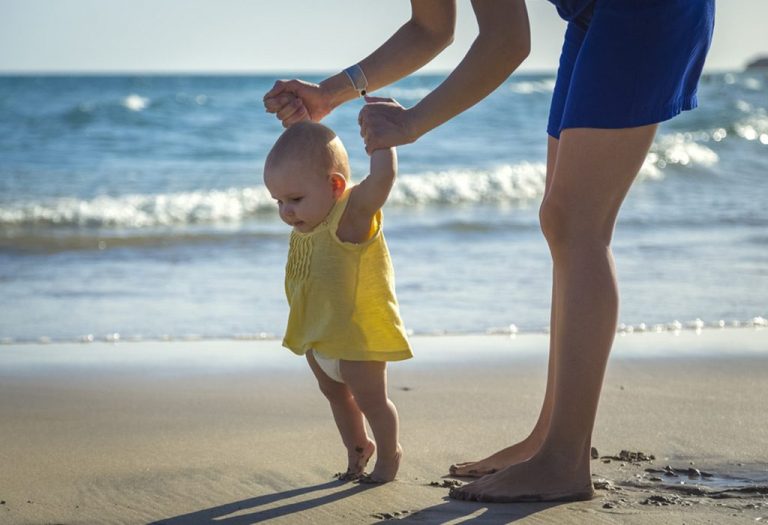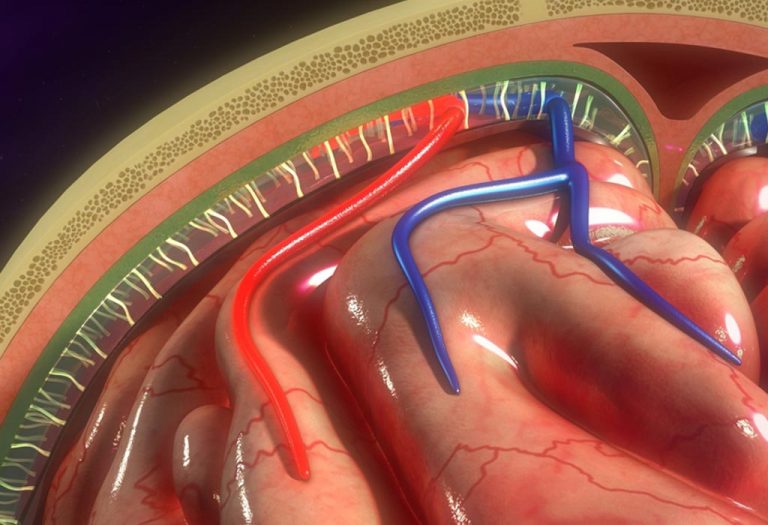Pain in Children’s Legs: Causes, Signs & Remedies

- What Is Growing Pain?
- Causes of Leg Pain in a Child
- Child Growing Pain Signs and Symptoms
- Diagnosis of Childhood Growing Pain
- Treatment for Growing Pain in Children
- Home Remedies for Growing Pain in Kids
- When You Should Consult the Doctor?
- Things to Remember
- FAQs
Kids from the age group of 8 to 12 often suffer from pain behind their calves or knees at night. This pain is referred to as growing pains in kids because of their age. Knowing what it is and how to remedy it is sure to help you deal with any pain your child experiences. Growing pains typically occur during periods of rapid growth, but contrary to popular belief, they are not directly caused by growth spurts. These pains are more likely the result of muscle fatigue and overuse from physical activities during the day, such as running, jumping, and playing sports. Ensuring your child gets proper rest and nutrition can help alleviate these discomforts.
What Is Growing Pain?
Kids are always on the move, running, jumping and playing a million games. While this is good for the child’s health, the downside is that excess physical activity often leads to leg pain in children during late afternoons and evenings. This pain is often referred to as growing pain, but till date, no research has been able to identify the correlation between the two.
Growing pain is an aching or throbbing pain with a low pain threshold which might be severe enough to wake your kid from sleep. Normally the pain is centred at the back of the knee, calves, or front of thighs. Although it can be an intense ache, the good news is that it can easily be treated with a mild heat pad below or above the affected areas and a simple massage on the affected area.
Parents normally dismiss these symptoms because this leg pain in children vanishes miraculously in the mornings making them think that their children might be faking the pain. But actually, that is not the case at all. Pain sometimes resolves itself in the morning and kids are again fit to be active till the pain relapses.
Causes of Leg Pain in a Child
Children are most active during their pre-teen ages, but growing pain can start as early as the age of 3 and is most frequently reported by kids in the age group of 8-12. According to the American College of Rheumatology, the following are the causes of leg pain in kids (1).
1. Overactivity and Muscle Strain
Children who are very active, engaging in activities like running, jumping, and climbing, often strain their muscles. Due to their low pain threshold, they might not notice the strain until it becomes severe enough to cause immobility.
2. Sports-Related Growing Pains
Studies indicate that growing pains are commonly seen in children who participate in a full day of sports. The strain from prolonged physical activity can overwhelm their developing musculoskeletal system.
3. Musculoskeletal System Immaturity
The musculoskeletal system in children is still developing and is not equipped to handle the continuous pressure of all-day sports activities. This can lead to leg pain, particularly after intense physical exertion.
4. Restless Leg Syndrome
Growing pains can sometimes be linked to restless leg syndrome, a condition where the child experiences an uncontrollable urge to move their legs, often causing discomfort or pain.
5. Vitamin D Deficiency
A lack of sufficient Vitamin D in a child’s diet can lead to leg pain. Vitamin D is crucial for bone health, and its deficiency can cause discomfort and pain in the legs.
6. Flat Feet
Children with flat feet may experience leg pain, particularly after walking or running for extended periods. This condition can strain the muscles and ligaments in the legs.
7. Improper Footwear
Wearing improper or ill-fitting shoes can contribute to leg pain in children. Shoes that do not provide adequate support can lead to muscle strain and discomfort.
8. Inflammatory Conditions
Conditions such as juvenile arthritis or other inflammatory diseases can cause persistent leg pain in children. These conditions often require medical intervention for proper management.
9. Dehydration
Dehydration can lead to muscle cramps and leg pain in children, especially during or after physical activities. Ensuring adequate hydration is important to prevent these symptoms.
Growing pain has nothing to do with growing parts of the body or the faster growth of the children who are active in sports. Parents should not discourage children from taking an active interest in sports because of these growing pains. Normally, the pain stops when they stop growing, so these pains are very easily manageable and curable.
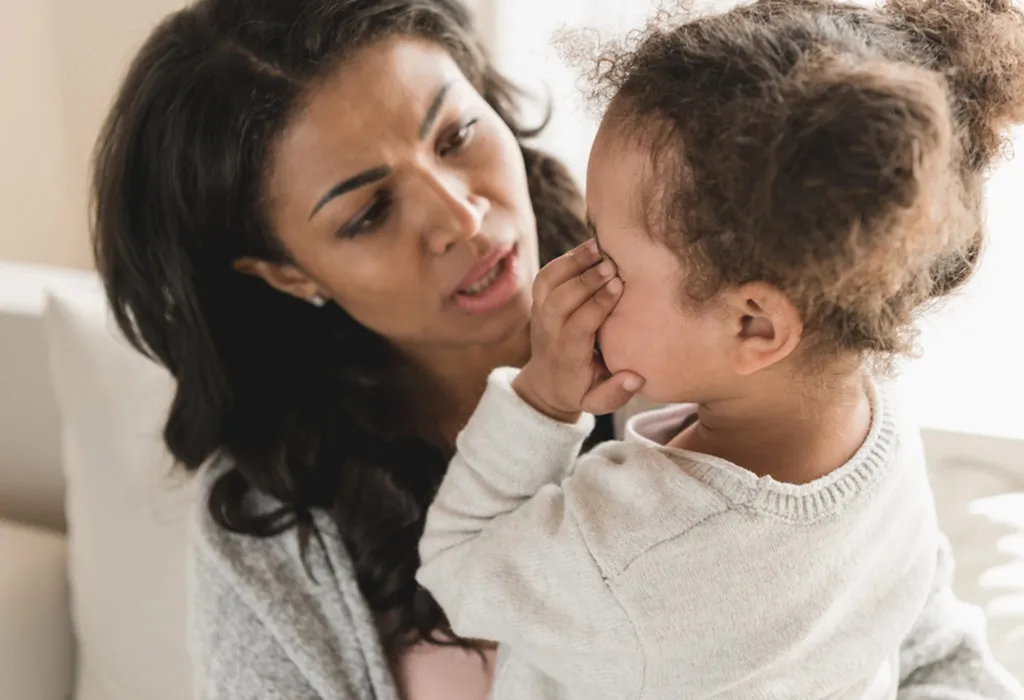
Child Growing Pain Signs and Symptoms
Growing pain normally doesn’t hit both limbs. So parents must notice that their child may have leg pain in one leg. The subtle signs and symptoms of growing pain are (2):
- Throbbing pain like mild cramps in one or both legs
- Aching of muscles in the late afternoon or evening
- Experiencing pain which centralizes at the frontal portion of thighs, calves or back of the knees
- Experiencing pain which does not occur every day
- There may be other symptoms like headaches or abdominal pain during episodes of growing pain
Diagnosis of Childhood Growing Pain
According to the Cleveland Clinic, a diagnosis of growing pain is easily done by doctors through what they refer to as diagnosis through exclusion (3). This means that the diagnosis of growing pains is made after excluding all the usual suspected ailments. It is normally very easy to diagnose these pains as the patients respond very well to touch.
While patients with other types of pain don’t respond well to physical touch or massages, patients with growing pain feel rather comfortable with massages and cuddling as it eases their pain. In very rare cases, however, doctors may ask for blood tests and x-rays. This is not a bad thing as it helps eliminate other underlying conditions of leg pain if any.
Treatment for Growing Pain in Children
Various treatments are suggested for growing pain, which presents itself as severe leg pain or leg pain at night (4). This ailment can be easily taken care of by simple painkillers like ibuprofen or acetaminophen. Aspirins are absolutely not recommended for children or teens as studies have linked aspirin use in children to Reye’s syndrome, which is a very serious condition that causes the liver and brain to swell.
To determine how much ibuprofen or acetaminophen should be administered, you can talk to a doctor. It is recommended that you refrain from giving any medication unless the pain is really unbearable for your child. There are other ways to tackle these problems at home.
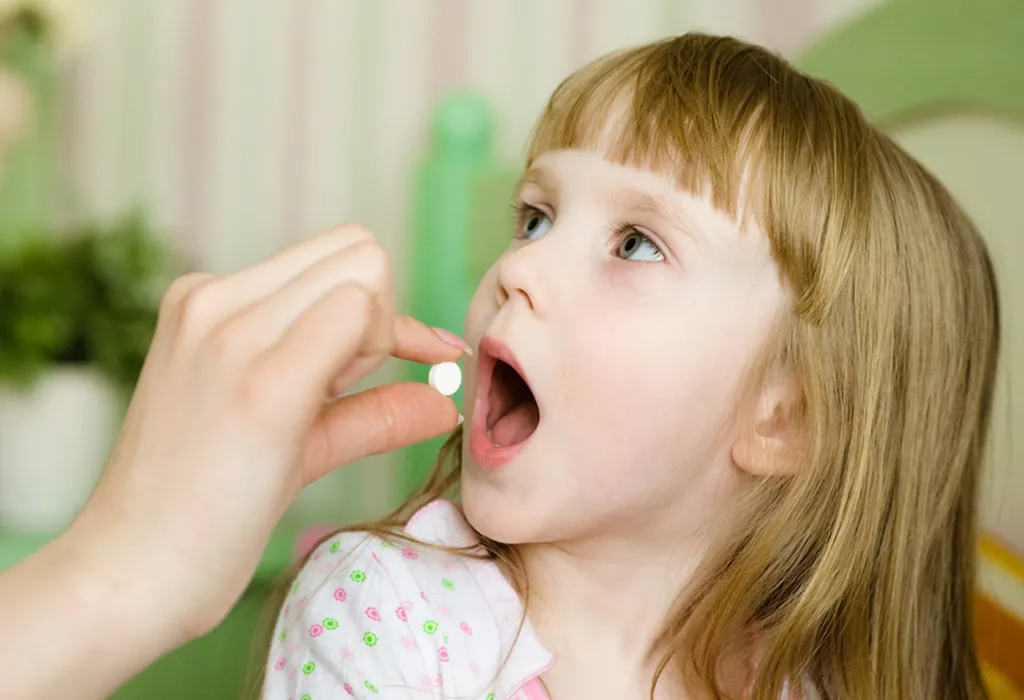
Home Remedies for Growing Pain in Kids
For children or teens suffering from growing pains, preparing a suitable remedy at home is very easy. Numerous home remedies are very helpful in reducing growing pain substantially. These include the following:
- Massaging the affected leg: Normally, muscle cramping goes away with a good massage of the area. Using warm oil for massage is a great option, too.
- Using heat pad: Using heat pads under or over the affected area minimises the pain and helps your child feel relaxed after some time.
- Stretching the muscles: Stretching the muscles of your child’s leg in the mornings may also help minimise the pain at night. Please visit your physiotherapist or doctor to know more about the stretching exercise.
- Citrus fruits or juices: Parents are advised to give citrus fruits like oranges or its juices (preferably freshly extracted) to their kids before playtime. This will help in providing them with vitamin C and so that their muscles can resist soreness.
When You Should Consult the Doctor?
While growing pain is not the type of ailment one should worry about, one must watch out for other symptoms like the following:
- Pain in the morning
- Fever
- Redness
- Swelling
- Weakness
- Limping
- Loss of appetite
- Tiredness
- Sensitivity to touch or massage
- Unusual behaviour
Normally growing pains do not interfere with your child’s ability to do usual things like playing, but if you observe any of the changes listed above, do visit a doctor for a thorough check-up.
Things to Remember
Growing pain in your child or teen is a very normal phenomenon and it can be easily tackled. If you are under the impression that your child may be faking the pains as it does not present itself in the mornings, then you are mistaken, as growing pains rarely occur in the morning. If your child is having trouble sleeping because of muscle pain, you may reassure them by telling them the discomfort is temporary and is sure to go away after they stop growing.
FAQs
1. Do growing pains affect a child’s sleep quality?
Yes, growing pains can disrupt a child’s sleep, particularly because they tend to occur at night. Some children may wake up in the middle of the night due to the discomfort, which can affect their overall sleep quality. Establishing a soothing bedtime routine and using gentle leg massages or warm baths before bed can help alleviate the pain and promote better sleep.
2. Are there any dietary factors that could influence the severity of growing pains?
Certain dietary factors, such as a deficiency in essential nutrients like Vitamin D, calcium, and magnesium, may exacerbate the severity of growing pains. These nutrients are crucial for healthy bone and muscle development. Ensuring that your child’s diet includes sufficient amounts of these vitamins and minerals can help reduce the intensity and frequency of growing pains.
This was all about sudden leg pain in children. Growing pains are a normal part of the process of your child’s body attaining maturity. If your child is suffering, just apply a warm compress and massage and cuddle them to sleep, knowing that they will be better in no time.
References/Resources:
1. Growing Pain; American College of Rheumatology; https://rheumatology.org/growing-pains
2. Growing Pains; Familydoctor.org.; https://familydoctor.org/condition/growing-pains/
3. Growing Pains; Cleveland Clinic; https://my.clevelandclinic.org/health/diseases/13019-growing-pains
4. Growing pains; Better Health Channel; https://www.betterhealth.vic.gov.au/health/healthyliving/growing-pains
5. Leg Pain; Children’s Hospital Colorado; https://www.childrenscolorado.org/conditions-and-advice/conditions-and-symptoms/symptoms/leg-pain/
6. Growing Pains; NHS; https://www.nhs.uk/conditions/growing-pains/
7. Growing Pains; Nemours Kids Health; https://kidshealth.org/en/parents/growing-pains.html
Also Read:
Knee Pain in Kids
Migraine in Children
Chest Pain in Kids
Foot Pain in Children
Was This Article Helpful?
Parenting is a huge responsibility, for you as a caregiver, but also for us as a parenting content platform. We understand that and take our responsibility of creating credible content seriously. FirstCry Parenting articles are written and published only after extensive research using factually sound references to deliver quality content that is accurate, validated by experts, and completely reliable. To understand how we go about creating content that is credible, read our editorial policy here.







